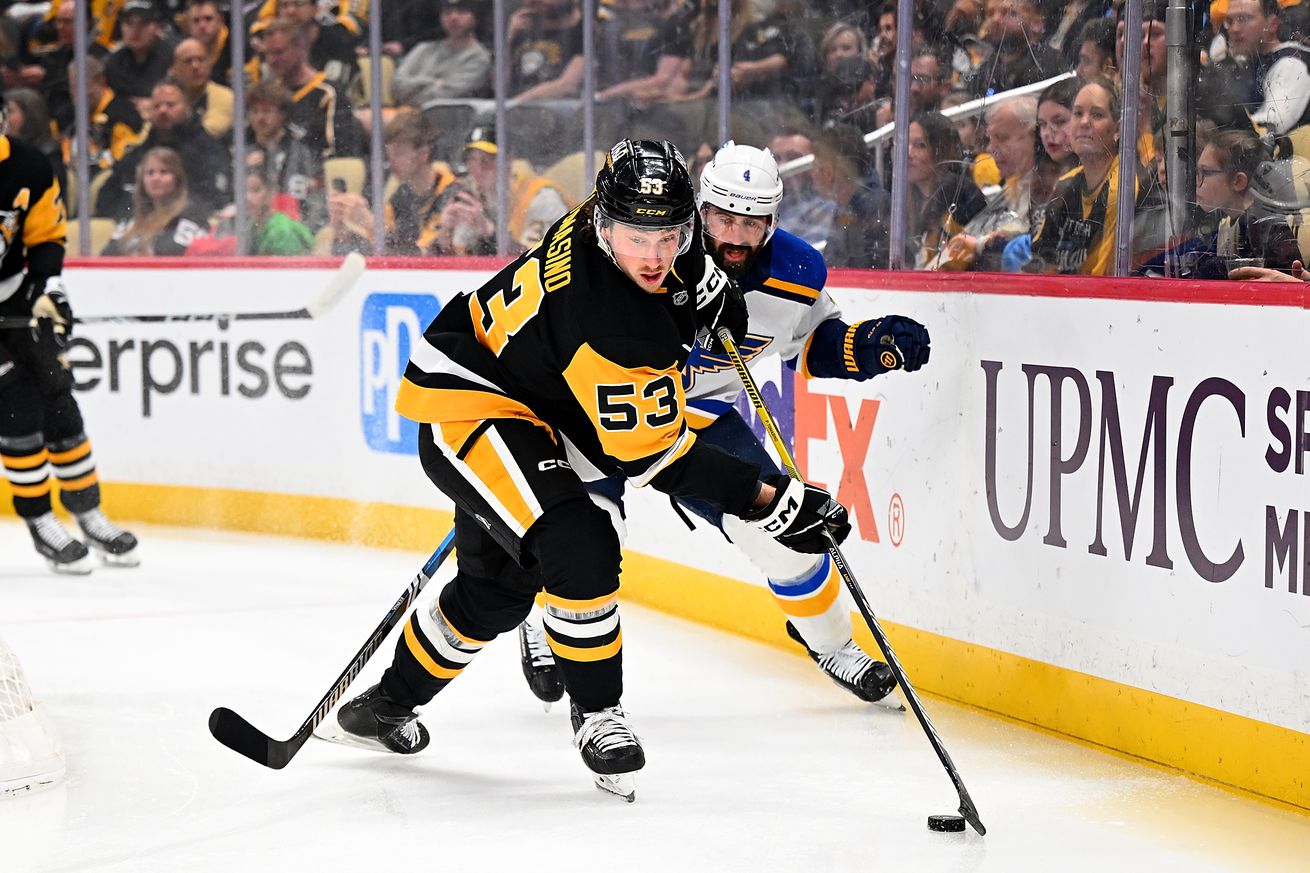
He needs to make the most of it.
Usually when a team slips out of playoff contention at the end of the regular season it can become an opportunity to start looking ahead for future seasons. Prospects get called up, younger players get big playing time, and everything becomes an audition.
With the Pittsburgh Penguins likely to keep their top prospects in the American Hockey League to play meaningful games for Wilkes-Barre/Scranton, there might not be many opportunities for that to happen here.
(I support that decision and think it is the right call, by the way.)
The closest thing they might have for that is defenseman Vladislav Kolyachonok and forward Philip Tomasino.
While I am intrigued by what Koyachonok can do and think he was a worthwhile waiver claim, Tomasino is the one that is really worth keeping an eye on. Not only because he might have a chance to make a bigger impact next season if everything goes well, but also because he has more to play for the rest of the way as it relates to his Penguins future.
While Koyachonok is under contract for next season on a league-minimum/entry-level deal, Tomasino actually has something to prove because he is playing for a contract and a continued spot in the organization.
Not only is he a restricted free agent, but he is an arbitration-eligible restricted free agent.
That can complicate things a little bit and make it so a qualifying offer is not a guarantee.
How much of a raise could he potentially be looking at?
How much are the Penguins willing to pay him?
How much can his finish to the season impact the answers to those questions?
Over the past couple of years the Penguins have not extended qualifying offers to arbitration-eligible players like Ryan Poehling and Pierre-Olivier Joseph due to concern their salaries might go beyond their actual on-ice value.
Does the Penguins’ rebuild and (the presumed) lack of a salary cap crunch next season change that mentality? That remains to be seen.
From purely a numbers standpoint, Tomasino has not been a bad player for the Penguins.
He has played a half-season’s worth of games (41) as of Thursday and has scored at a 20-goal pace, which quite honestly makes him one of the team’s most productive goal-scorers.
Among players that have appeared in at least 25 games this season his goals-per-game average is fourth on the team behind only Rickard Rakell, Bryan Rust and Sidney Crosby. On a per 60-minute basis, he actually moves up one more spot with his 1.06 goals per 60 minutes (all situations) moving slightly ahead of Crosby (1.04).
Only taking into account his Penguins numbers and excluding his time with Nashville, his goal-per-60 pace (all-situations) would put him in the top-100 in the NHL among the 600 players with at least 500 minutes of ice-time. Even taking into his Nashville time he’s still in the top-160.
From a goal-scoring perspective, he’s produced like an NHL player with the Penguins, and a solid one.
It is also the highest rate he has ever produced in the NHL from a goal-scoring perspective.
But that alone probably isn’t going to be enough to guarantee him a spot next season or a qualifying offer.
While his goal-scoring has reached a career-best in Pittsburgh, his overall point production from a playmaking standpoint has not matched, and his individual shot and scoring chance generation has remained close to his previous career levels. There’s a definite shooting percentage boost happening here that may not be repeatable.
Are the Penguins willing to pay — and gamble — seven figures on that next season?
Overall, I liked the mindset behind acquiring him, and want to see them do more of it over the next year. That is one of the benefits of stockpiling so many draft picks as a rebuilding team. It gives you the opportunity to flip one and take a chance on a younger, talented player that might need a fresh start.
But the Penguins still need to find out more with him, and the next 12 games should be a good time for him to audition even more extensively than he already has.
The Penguins also seem to realize that, as his ice-time in March has jumped from what it was earlier in the season. Granted, the trade deadline probably played a big role in that with Anthony Beauvilier and Michael Bunting leaving, but the bottom line is that he is playing more. He is averaging more than three additional minutes per game than what he was in February and earlier in the season, and his past few games have been among his highest ice-time totals of the season.
That should continue the rest of the way. It is audition time, and he needs to make the most of it.